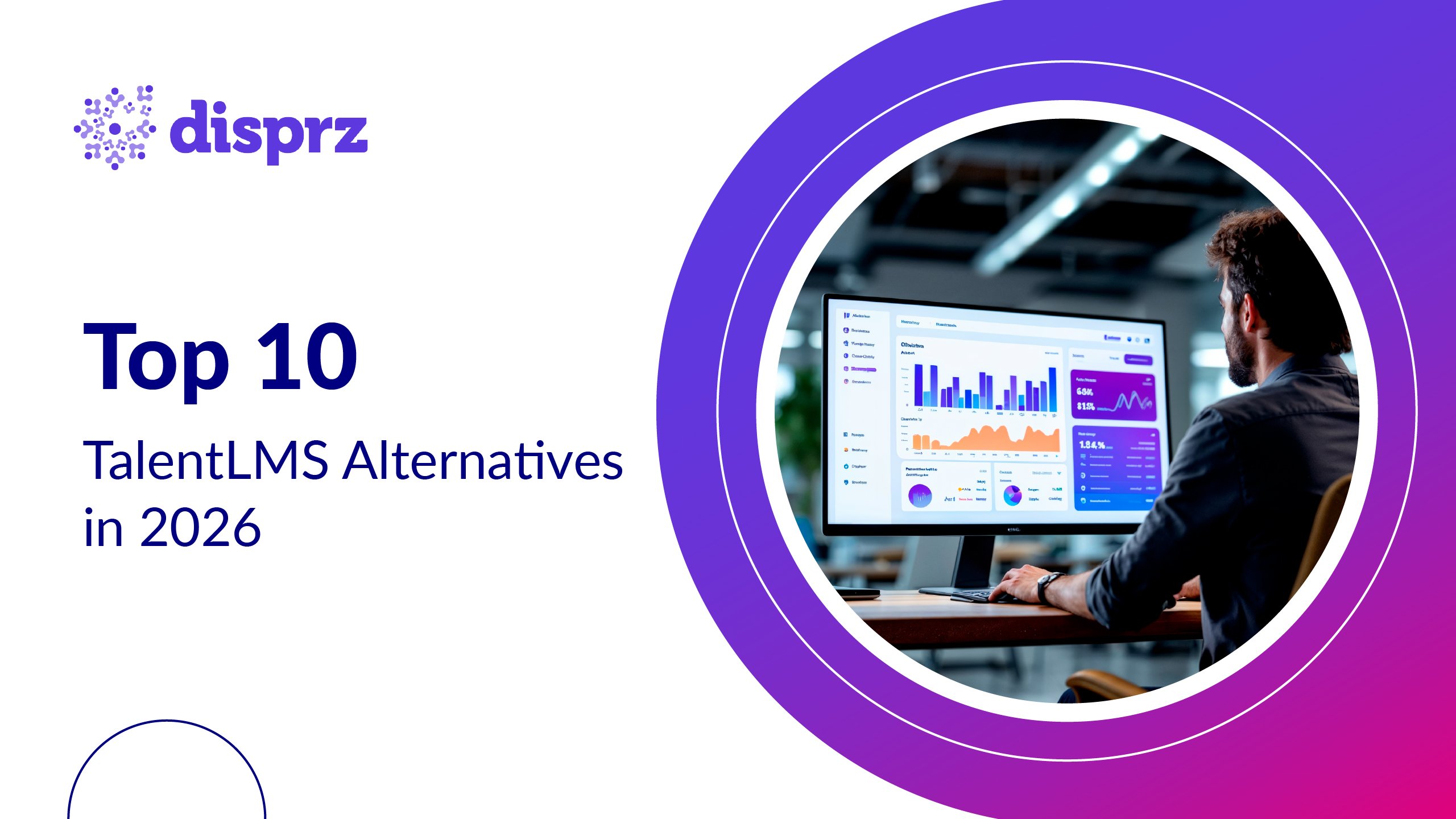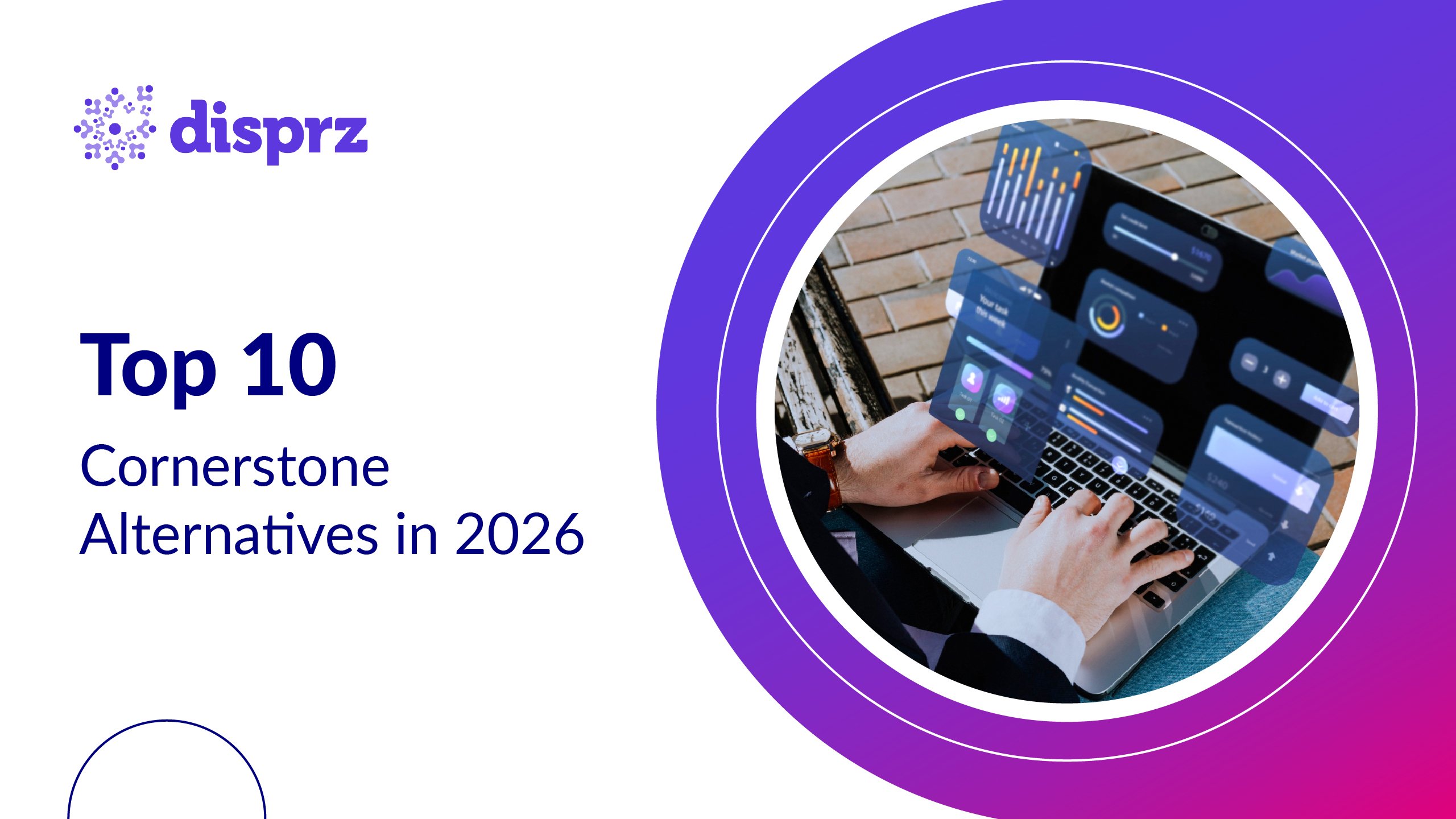When training extends beyond employees to include partners, vendors, and customers, a traditional LMS often falls short. That’s where an Enterprise LMS steps in, and it is built to handle complex learning needs across multiple audiences, regions, and brands.
With centralized control, AI-driven personalization, and seamless integrations, an Enterprise LMS empowers organizations to deliver consistent, high-impact learning at scale without compromising flexibility or experience.
Is an Enterprise Learning Management System the right foundation for your organization’s growth? Read on to find out.
What Is Extended Enterprise Learning?
Extended Enterprise Learning is the practice of delivering learning and development programs to audiences beyond your employees. This includes channel partners, customers, and suppliers.
In 2025, it’s evolving into a strategic growth enabler. With artificial intelligence (AI), data analytics, and personalized learning paths, organizations can now deliver scalable, targeted, and branded training experiences that align every stakeholder with the company’s goals and standards.
By using an Extended Enterprise LMS, businesses ensure that everyone connected to their brand, internally or externally, speaks the same language of performance and excellence.
How It Differs from Traditional Employee Training
| Aspect | Employee LMS | Extended Enterprise LMS |
|---|---|---|
| Audience | Internal employees | External stakeholders (partners, customers, vendors) |
| Purpose | Skill development & compliance | Brand alignment, product enablement, and ecosystem growth |
| Access | Restricted to company users | Multi-tenant access with customized portals |
| Content | Role-based learning paths | Product, sales, compliance, and customer education content |
| Impact | Improves internal performance | Drives revenue, loyalty, and partner efficiency |
Who Benefits from It
-
Channel Partners: Gain deeper product knowledge and sales confidence
-
Customers: Learn to use your products effectively and maximize value
-
Vendors/Suppliers: Stay compliant with quality and process standards
Explore more on Partner Enablement and Customer Education to see how leading organizations are extending learning beyond employees.
Why Extended Enterprise Learning Matters in 2026
Organizations investing in extended enterprise learning are already seeing measurable business gains across four key areas:
Stronger Partner Performance
When partners are well-trained, they help you boost sales and also scale your reach. According to Deloitte, organizations that invest in structured partner learning see up to 25% higher sales performance through their channel networks. Trained partners understand product nuances, handle objections confidently, and deliver consistent brand experiences, driving both loyalty and revenue growth.
Greater Brand Consistency
Every interaction beyond your walls shapes brand perception. LinkedIn Learning’s 2025 Workplace Learning Report reveals that organizations extending training to external stakeholders achieve 32% stronger brand alignment across global markets. Whether it’s a distributor in Singapore or a reseller in Dubai, unified training ensures your brand speaks with one voice everywhere.
Higher Customer Satisfaction
Customer education has become a growth lever, not a support function. SHRM research shows that trained customers are 35% more likely to renew and generate 28% fewer support requests. When customers know how to extract value from your solution, adoption deepens and satisfaction follows, turning education into retention.
Accelerated Revenue Growth
Learning now drives measurable business outcomes. Organizations with mature extended enterprise learning programs achieve 1.5× faster revenue growth, thanks to better partner enablement, customer stickiness, and supply chain compliance.
Who Should Be Part of Your Extended Enterprise Learning Program?
For an extended enterprise Learning management strategy to succeed, it must cater to the unique learning needs of various external stakeholders.
These stakeholders play pivotal roles in driving business growth, operational excellence, and customer satisfaction:
Channel partners and resellers
These are often the face of your brand, interacting directly with customers. Their performance significantly impacts your sales and market reputation. Providing them with comprehensive product training, sales techniques, and regular updates ensures they understand your offerings thoroughly, can confidently address customer inquiries and concerns, and represent your brand accurately and professionally.
ROI Impact: Organizations that train their partners report up to 25% higher sales performance and faster product adoption.
Customers and end users
Today’s customers seek value beyond the purchase; they expect guidance on how to maximize the benefits of extended enterprise learning products or services. Offering structured training such as employee onboarding, troubleshooting modules, and in-depth usage guides helps boost customer confidence in using your product, minimize support requests, enhance satisfaction, and encourage repeat business.
ROI Impact: Organizations investing in customer education see 35% higher retention and a measurable drop in support tickets.
Suppliers and vendors
These are critical links in your supply chain. Equipping them with training on compliance training standards, operational requirements, and quality benchmarks ensures consistency in the delivery of materials or services and adherence to regulatory requirements, reducing legal risks.
ROI Impact: Well-trained suppliers can reduce compliance violations by up to 30%, safeguarding both productivity and reputation.
Franchisees & Dealers
Franchise networks thrive on consistency. These segments ensure consistency right from the store experience to service quality. Continuous training ensures every outlet reflects the same standards of excellence, regardless of geography.
ROI Impact: Franchises with standardized learning programs maintain 40% higher operational consistency across locations.
Top Trends Shaping Extended Enterprise Training in 2026
Extended Enterprise Learning is set to transform in 2025, driven by innovative technologies and evolving learner expectations.

Here are the top trends shaping this landscape:
AI + Data Analytics = Smarter Partner Enablement
AI is revolutionizing learning by creating highly tailored experiences. By blending AI and data analytics, organizations can create dynamic, role-based learning paths that evolve with learner behavior. A partner in sales might receive modules on negotiation tactics, while a supplier gets compliance updates automatically triggered by policy changes. This continuous intelligence transforms learning into a business performance driver, ensuring every stakeholder learns what matters most, when it matters most.
Microlearning = Faster Knowledge Retention
Microlearning delivers bite-sized, easily digestible content that caters to the time-constrained schedules of external stakeholders. These short modules, available on-demand, allow learners to grasp concepts quickly and apply them immediately. In high-growth markets such as Indonesia, the UAE, and Vietnam, partner and customer learning often happens on the go. Whether it’s a 5-minute product update for a UAE distributor or a quick compliance refresher for a manufacturing supplier in Thailand, microlearning ensures training never interrupts productivity.
Learn more about "What is Microlearning? A Complete Guide for L&D Leaders"
Gamification = Higher Engagement and Motivation
Adding gamification elements such as badges, leaderboards, and challenges transforms mundane training into an engaging experience. Gamification not only boosts motivation but also fosters a sense of achievement. Channel partners, for instance, can be incentivized with rewards for completing advanced sales certifications. Organizations in Saudi Arabia and the Philippines are turning to gamified learning to engage distributed sales teams and external partners.
Mobile-First Learning = Anytime, Anywhere Access
With the ubiquity of smartphones, extended enterprise LMS platforms are prioritizing mobile-friendly interfaces. These platforms enable stakeholders to access training anytime, anywhere, ensuring learning continuity. Mobile-first designs also allow seamless updates and offline access, ensuring a consistent experience across geographies. Regional enterprises in the UAE and KSA are using multilingual, app-based training to ensure consistent learning experiences across their global networks.
Real-Time Analytics = Continuous Performance Insights
Advanced analytics empower organizations to track the effectiveness of their training programs in real time. Metrics such as course completion rates, quiz scores, and time spent on modules provide actionable insights for continuous improvement. For example, if a specific training module shows low engagement, it can be optimized for better delivery.
These trends collectively enhance the efficiency, scalability, and engagement of extended enterprise learning programs, positioning them as a critical driver of business success in 2025 and beyond.
What Makes an Extended Enterprise LMS Strategy Successful?
To design a successful extended enterprise learning strategy, organizations need to incorporate several critical components that address the diverse needs of external stakeholders while aligning with business goals:
Defined objectives
Start by setting clear goals and measurable objectives. Whether the goal is to improve customer satisfaction, enhance partner performance, or ensure supplier compliance, having specific targets helps align training programs with broader business strategies.
Customizable learning paths
One-size-fits-all training doesn’t work for diverse audiences. Provide tailored content that caters to the unique needs of customers, partners, and vendors.
Scalable LMS solutions
Choose an extended enterprise learning platform that supports scalability and multi-language capabilities, ensuring a seamless experience for global stakeholders.
Integration with business tools
Seamless integration with other systems such as CRM, ERP, and analytics platforms is essential for efficient operations.
Ongoing support and feedback mechanisms
Continuous support is vital for the success of extended enterprise learning programs. Offer helpdesk services, FAQs, and chatbots to assist stakeholders with their learning journeys.
Quick Checklist for a Winning Extended Enterprise LMS Strategy
| Component | Why It Matters | Example |
|---|---|---|
| Clear Objectives | Aligns training with business KPIs | Product certification targets for channel partners |
| Customizable Learning Paths | Increases engagement and relevance | Tailored modules for customers vs. suppliers |
| Scalable LMS | Supports multiple regions and languages | Unified platform for UAE, KSA, and SEA learners |
| System Integration | Enables automation and insight sharing | LMS + CRM + ERP + SSO integration |
| Feedback & Support | Improves experience and retention | 24/7 chatbot, NPS surveys, and knowledge base |
Benefits of Implementing an Extended Enterprise LMS
Extended Enterprise Learning offers significant advantages that go beyond traditional training, enabling organizations to foster stronger relationships, drive growth, and maintain a competitive edge.
Here’s a closer look at the key benefits
1) Increased Revenue and Market Reach
When partners know how to sell better and customers know how to use a product well, growth naturally follows. The real change happens when organizations train their external networks to spot the right moment and personalize what they offer. Sales go up, conversations improve, and customers stick around because the experience feels right for them.
McKinsey says organizations that do personalization well can earn up to 40% more revenue than those that don’t.
2) Improved Customer Retention and Satisfaction
Educated customers stay longer and spend more. Structured onboarding and product tutorials reduce confusion and increase confidence. Businesses offering customer education programs have seen 50% higher revenue and 34% higher profitability, turning learning into loyalty.
3) Greater Operational Efficiency and Compliance
Training suppliers and vendors ensures consistency in quality, safety, and delivery. Automated compliance modules cut manual oversight and reduce costly errors. With a unified LMS, organizations can track completion, flag gaps, and maintain global standards effortlessly, saving time and minimizing risk.
4) Stronger Brand Reputation and Consistency
Every trained partner or distributor becomes a brand ambassador. When everyone in your ecosystem shares the same knowledge, values, and tone, your brand story remains consistent across regions.
With enterprise-ready LMS platforms like Disprz, organizations are turning extended learning into a measurable engine for growth, retention, and brand excellence.
What Challenges Do Companies Face, and How to Solve Them?
1) Content Customization for Diverse Stakeholders
Challenge:
Designing relevant, role-specific training for multiple audiences, from channel partners to suppliers, can be resource-intensive. Each group has unique needs, languages, and expectations, making generic content ineffective.
Solution Tip:
Create modular learning templates that can be localized and customized quickly. Use your LMS’s AI-powered content recommendations to tailor paths by role or region. Platforms like Disprz allow enterprises to auto-personalize learning journeys based on stakeholder profiles, saving both time and cost.
2) Technology Integration Across Systems
Challenge:
Integrating the LMS with existing systems such as CRM, ERP, or HRIS can be technically complex. Without seamless data flow, tracking partner performance or customer impact becomes difficult.
Solution Tip:
Adopt an LMS with open APIs and built-in integration capabilities. Connect your LMS to systems like Salesforce or SAP to sync user data and automate progress tracking. This not only streamlines administration but also links learning outcomes directly to business KPIs.
3) Sustaining Engagement Among External Learners
Challenge:
External learners such as partners, vendors, or customers often juggle competing priorities. Keeping them motivated to complete training can be difficult without an internal reporting structure.
Solution Tip:
Incorporate gamification elements such as leaderboards, reward badges, and tiered certifications to drive consistent participation. Add short, mobile-first microlearning modules and real-world application challenges to make learning both engaging and rewarding.
By partnering with the best extended enterprise LMS providers, organizations can overcome these challenges effectively.
How to Ensure Compliance and Data Security in Partner & Customer Training
When learning extends beyond your organization, so does your responsibility to protect sensitive data and ensure regulatory compliance. In 2026, enterprises must balance accessibility with airtight governance, ensuring every partner, vendor, and customer interacts with learning securely and ethically.
To protect your extended enterprise training ecosystem, focus on the practices that truly strengthen it, and make sure your customer training platform comes with the following features that support them.
-
Enable Single Sign-On (SSO): Simplify secure access across multiple portals while maintaining centralized authentication.
-
Restrict Access by Role: Grant permissions based on user type (e.g., partner, customer, or supplier) to minimize data exposure.
-
Encrypt All Data: Use end-to-end encryption and secure hosting environments to protect training content and user data.
-
Stay Compliant with ISO & GDPR: Ensure your LMS provider meets ISO 27001, GDPR, and region-specific data protection standards — especially critical for global operations in the UAE, KSA, and Southeast Asia.
-
Conduct Regular Audits: Periodic compliance and security reviews help identify gaps before they become risks.
-
Update Training Content Frequently: Reflect the latest regulatory and policy changes to keep your ecosystem compliant at all times.
Pro Tip: Choose an LMS that embeds compliance tracking and audit trails. Platforms like Disprz enable organizations to manage access controls, maintain data logs, and verify completion of mandatory compliance modules automatically.
How to Measure Success in Extended Enterprise Learning
Measuring the success of extended enterprise learning involves tracking key performance indicators (KPIs), such as:
-
Training completion rates: Percentage of stakeholders completing courses.
-
Knowledge retention: Improvement in stakeholder performance post-training.
-
Business impact: Increased sales, higher customer satisfaction scores, or enhanced operational efficiency.
-
Engagement metrics: Interaction rates with training content.
Regularly reviewing these metrics allows organizations to refine their strategies and achieve desired outcomes.
Below is a quick KPI framework to evaluate the success of your extended enterprise learning strategy:
| KPI | Metric | Why It Matters |
|---|---|---|
| Completion Rate | % of external learners finishing assigned modules | Indicates engagement and training relevance |
| Knowledge Retention / Product Knowledge Score | Average post-assessment or certification result | Tracks learner understanding and readiness to apply skills |
| Sales Lift | % increase in partner-driven revenue after training | Demonstrates ROI and direct business impact |
| Customer Satisfaction (CSAT / NPS) | Feedback scores post-learning or product adoption | Reflects how education improves user experience |
| Operational Efficiency | Reduction in errors or compliance violations | Links supplier training to quality and risk reduction |
| Engagement Metrics | Login frequency, time spent, or interaction rates | Reveals learner motivation and platform stickiness |
Learn more about How to Measure L&D ROI in the GenAI Age (2025 Guide)
Key Takeaways
-
Extended enterprise learning is redefining how organizations train not just employees, but also partners, customers, and suppliers.
-
The most successful programs in 2026 blend AI, microlearning, and analytics to personalize learning at scale.
-
Regional leaders in the UAE, KSA, and Southeast Asia are using mobile-first LMS platforms to reach dispersed partner networks.
-
A well-implemented Enterprise LMS drives measurable ROI, from 40% higher sales performance to faster partner onboarding.
-
Security and compliance remain non-negotiable. Adopt ISO 27001 and GDPR-aligned platforms to safeguard stakeholder data.
-
Engagement is the differentiator. Gamification, certifications, and community learning sustain participation.
-
Platforms like Disprz are enabling organizations to connect their entire ecosystem through one scalable, data-driven learning platform.
Conclusion: Building a Connected Learning Ecosystem in 2026
In 2026, learning no longer lives inside organization walls. The most future-ready organizations are those that treat partners, customers, and suppliers as extensions of their talent ecosystem — connecting everyone through shared knowledge, data, and purpose.
By investing in an Extended Enterprise LMS, businesses can align performance, strengthen relationships, and scale learning impact globally, all while maintaining compliance and consistency.
Platforms like Disprz are helping enterprises make this shift from fragmented training to a connected learning ecosystem that learns, grows, and wins together.
FAQs
1) What is an Extended Enterprise LMS?
An Extended Enterprise LMS is a learning management system designed to train audiences beyond employees, including channel partners, vendors, franchisees, and customers, all within one unified platform.
2) How is Extended Enterprise Training Different from Internal Employee Training?
Internal training focuses on employee development and compliance. Extended enterprise training, on the other hand, aims to align external stakeholders with business goals, improve product knowledge, and enhance brand consistency.
3) What are the Benefits of Extended Enterprise Learning?
There are several benefits of extended enterprise learning. It boosts sales performance, customer loyalty, and operational efficiency while reducing support costs and compliance risks, delivering measurable ROI across the business.
4) Who Uses Extended Enterprise LMS Platforms?
Organizations with distributed networks, from insurance, manufacturing, retail, and telecom to automotive and financial services, use extended enterprise LMSs to train partners, resellers, and customers across multiple regions.
5) How Do I Measure ROI from External Stakeholder Training?
Track KPIs such as course completion rates, sales uplift, customer satisfaction (CSAT), and reduction in compliance errors. Platforms like Disprz help link these metrics directly to business performance.








